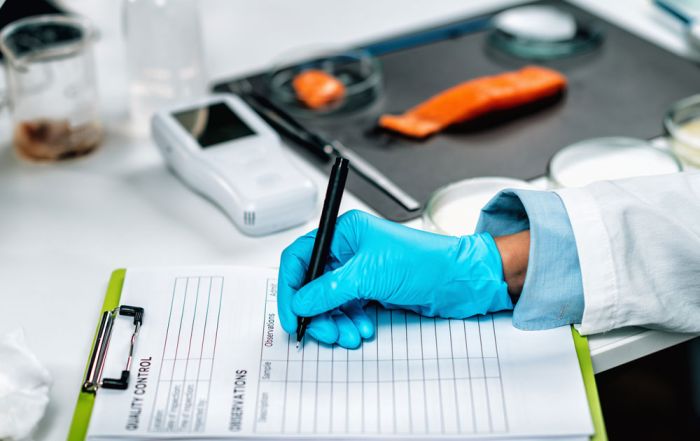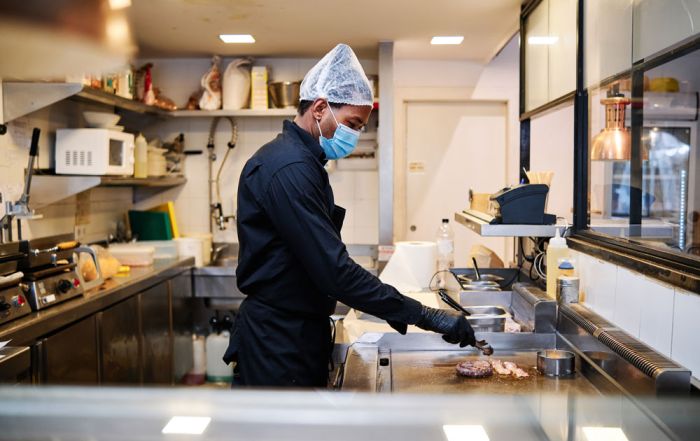Temperature Checks: Safeguarding Your Foodservice Business with Every Delivery
There is no mistake that for those of us in the Midwest, and much of the US, we are in the middle of summer, when the temperatures swell to the high-90s and low-100s. Along with the sweltering heat, comes a reminder about the importance of keeping cold food cold in our operations. Especially as we look at those deliveries that are coming into our operations each week. This receiving process might seem like a routine task, but it plays a vital role in preventing foodborne illnesses and ensuring the overall quality of food served to customers.
Upon receiving a cold food delivery, it is essential to inspect the temperature of each product. Use a calibrated food thermometer to measure the temperature of items such as dairy, meat, poultry, and seafood. Cold foods should be maintained at or below 41°F (5°C) to prevent growth of pathogens. If any items are above this temperature, they should be rejected to avoid potential contamination.
Not only should you be sure your staff check the temperature of the food as it arrives, but they should do so in the proper manner, so it is not contaminated in the process.
- For meat, fish, and poultry, the probe of the thermometer should be inserted directly into the thickest part of the food. For many products, but not all, this usually means the center.
- Live shellfish can be received at an air temperature of 45°F (7°C) and an internal temperature no greater than 50°F (10°C). But it should be cooled to 41°F (5°C) or below within four hours of receiving.
- For any vacuum-packed food or food that is packaged using modified atmosphere packaging (MAP), the thermometer should be inserted between the two packages, or if the package will allow it, it can be folded around the thermometer probe. For some items, for example, bacon that may have two vacuum sealed packaged per box, staff will need to open the case in order to take the temperature properly. Be sure not to puncture the package while taking the temperature.
- Milk and eggs can be received at an air temperature of 45°F (7°C) or lower, but just like shellfish, should be refrigerated at or below 41°F (5°C) upon receiving.
- Frozen foods should all be frozen solid. Look for signs of thawing and refreezing, such as ice crystals in the box, fluids or water stains on the case, or frozen liquids on or in the packages.
If the food you are receiving does not meet the above criteria, reject it and send it back. Make sure staff who inspect these items are empowered to do so. Rejecting any delivery can leave your operation short on supplies; however, be sure the employee who rejects a delivery is not blamed by staff for being the cause of the problem. Remember, if you have a true food safety culture, nothing is so important that it cannot be done safely.
… when food is delivered at the correct temperature, not only does it ensure a safe project, it preserves its taste, texture, and nutritional value.
Temperature checks also help maintain the quality of the food. When food is delivered at the correct temperature, not only does it ensure a safe project, it preserves its taste, texture, and nutritional value. For instance, if ice cream is delivered above freezing temperature, it may refreeze in the freezer, resulting in an undesirable texture. Similarly, meat and poultry products that are not kept at the right temperature leads to waste and loss of profit. Ensuring that food is delivered at the correct temperature helps maintain the quality and extends the shelf life of the products.
When customers trust that a restaurant or foodservice operation prioritizes safety and quality, they are more likely to return and recommend the establishment to others. Regular temperature checks of deliveries help build this trust, as customers can be confident they are consuming safe and high-quality food. This simple yet effective step can prevent foodborne illnesses, reduce waste, minimize financial losses, and enhance customer satisfaction. Risk Nothing.
READ MORE POSTS
Hot off the Press: The 2022 Model Food Code has been Released! Part One.
It has finally arrived! Yes, the new year has arrived – but I was not referring to it. I was referring to the new 2022 Model Food Code (10th edition) that has been released by the Food and Drug Administration. I thought I might take this blog and the next blog to discuss some of the changes that have been made to the Food Code that you might see coming your way in the next few years.
Is a Food Safety Culture on your New Year’s Resolutions List?
We hope you all had a wonderful Holiday season and are getting ready for a great new year!
Don’t Underestimate the Importance of Employee Health as we head into the Winter Months
Early this month, I ran across an article discussing an outbreak investigation in the Australian Capital Territory. The outbreak caused more than 200 people to fall ill and was one of the most widespread outbreak investigations in the history of the territory. The cause was traced back to Norovirus, a virus I am sure you have heard us opine about in this blog before.
Exclusion and Restrictions: Understanding Employee Health and the Food Code
I received a call earlier in the month from a foodservice operator who suspected that one of their employees may have fallen ill and wondered if they had to send the employee home for the day. Once I started to ask a few more questions, it became obvious that the operator wasn’t really in-tune with the food code requirements on restrictions or exclusions for employees who may not be feeling well. Given that most operations are dealing with staff shortages currently and the fact that we are about to head into the fall and winter – when we tend to see an increase in upper respiratory and other illnesses, such as the flu - it seemed like a very timely and important topic for the blog this month.










